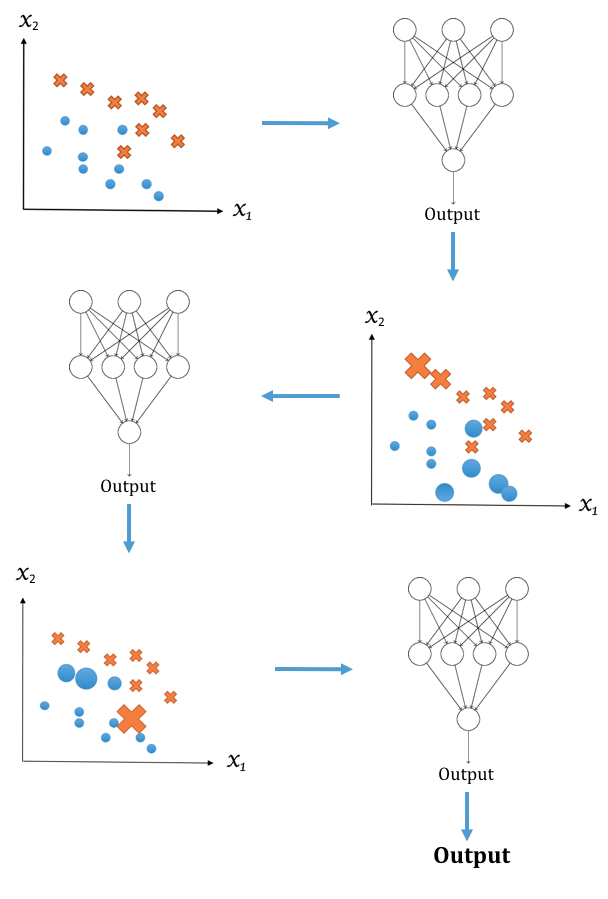In the context of supervised learning, we define weak learners as learners that are just a little better than a baseline, such as randomly assigning classes or average values. Much like ants, weak learners are weak individually but together they have the power to do amazing things.
It makes sense to take into account the strength of each individual learner using weights. This general idea is called boosting. In boosting, all models are trained in sequence, instead of in parallel as in bagging. Each model is trained on the same dataset, but each data sample is under a different weight factoring, in the previous model's success. The weights are reassigned after a model is trained, which will be used for the next training round. In general, weights for mispredicted samples are increased to stress their prediction difficulty.
The following diagram illustrates the steps for boosting, again using classification as an example:

There are many boosting algorithms; boosting algorithms differ mostly in their weighting scheme. If you've studied for an exam, you may have applied a similar technique by identifying the type of practice questions you had trouble with and focusing on the hard problems.
Face detection in images is based on a specialized framework that also uses boosting. Detecting faces in images or videos is supervised learning. We give the learner examples of regions containing faces. There's an imbalance, since we usually have far more regions (about 10,000 times more) that don't have faces.
A cascade of classifiers progressively filters out negative image areas stage by stage. In each progressive stage, the classifiers use progressively more features on fewer image windows. The idea is to spend the most time on image patches, which contain faces. In this context, boosting is used to select features and combine results.
